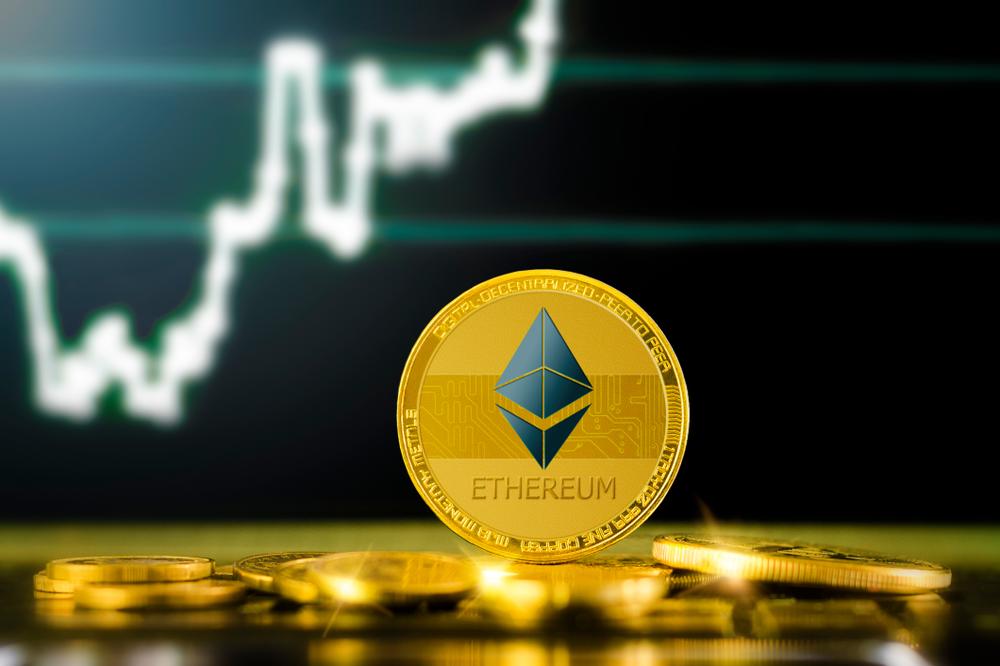- The further development of Ethereum is in full swing. As the developers recently announced, the Istanbul hard fork will be activated in the Ropsten test network on 02 October.
- Furthermore, the developers of Ethereum 2.0 explained that a first draft of sharding will be presented at the upcoming DevCon 5.
The long-term potential of Ethereum (ETH) is enormous. However, Ethereum is known within the crypto community as a project that is not the fastest. While this is positive from a security point of view as no flawed upgrades are released, it is also a drawback for a strong development for the ETH price.
Therefore, many Ethereum investors are looking forward to next year when Ethereum 2.0 will be introduced and the ETH blockchain will become more scalable and efficient. Until then, however, further upgrades for the Ethereum network are pending.
What is the current status of ETH developments?
The next network upgrade for Ethereum is the Istanbul hard fork. This will include a number of Ethereum improvement proposals (EIPs) that will include, in particular, aligning the cost of opcodes with their computing costs, improvements in denial of service attack resilience, layer 2 solutions based on SNARKs and STARKs, and higher interoperability between Ethereum and ZCash.
In particular, the implementation of the following EIPs is planned:
- EIP-152: provides the possibility to verify the Equihash PoW within the framework of an Ethereum contract. This will enable relay and Atomic Swap transactions with Zcash (ZEC).
- EIP-1108: makes zk-SNARKs cheaper, so that more cost-effective scaling and data protection applications can be created.
- EIP-1344: adds the ability for contracts to track the correct chain on state channels and plasma.
- EIP-1884: changes the cost of some EVM opcodes to prevent spamming attacks.
- EIP-2028: makes zk-SNARKs and zk-STARKs cheaper by reducing the cost of accessing data within transactions.
- EIP-2200: changes the cost calculation for the EVM.
The original schedule actually provided for the launch of the Istanbul Hard Fork in mid-October. However, there were some delays. As this is a major upgrade, the improvements will also be tested on several test networks before being activated on Ethereum’s main network.
According to a recent update on GitHub, the Istanbul EIPs will be activated on Ethereum’s leading test network, Ropsten, on October 2. The Görli test network is expected to receive the upgrade on 30 October and the Rinkeby test network on 13 November.
In addition, it is known that the Istanbul Hard Fork will be activated in two parts in the mainnet. The first update is scheduled for later this year, with the second part to follow in the first quarter of 2020. More detailed dates however have not yet been announced.
Preparations for Ethereum 2.0
The Istanbul Hard Fork can also be seen as a preparation for Ethereum 2.0, which will mark the introduction of Proof of Stakes and Sharding for Ethereum to significantly increase the transaction speed and efficiency of the network.
Researchers working on Sharding Phases 1 and 2 of Ethereum 2.0 have recently stated that the Shard execution environment will be demonstrated in a few days at DevCon 5 from 8 to 11 October. Will Villanueva, a programmer from ConsenSys, explained via Twitter:
Today, we had a victory! We were able to plug in the Eth 2, phase 2 Wasm execution engine into the shard chain/client we built in lighthouse! We have a simple, simulated Eth 2 phase 1/2 and we’re in the early stages of running an Execution Environment on it! ?
We’ll be showcasing it at Devcon and we’re quite excited! Lots of cleanup to do, but there will be a lot of cool progress to show soon!
What about the Ethereum price?
Delays in development have a negative effect on the price of a cryptocurrency in the crypto market. However, this was not reflected in the ETH price until the beginning of last week. This showed a clear upward trend in the past month and was able to rise above the USD 220 mark.
After the entire crypto market, led by Bitcoin, suffered a flash crash last Monday, however, the Ethereum price also fell over the last 7 days by 20 percent to currently 172 USD. Over the past month, however, ETH has recorded only a slight minus of currently 0.1 percent. At the time of writing Ethereum showed an increase of 4.7 percent, possibly influenced by the news that a first draft of Sharding will be shown at DevCon 5.
The future of the ETH price could therefore depend on the Istanbul upgrade and especially on Ethereum 2.0.
Recommended for you:
- Buy Ethereum Guide
- Ethereum Wallet Tutorial
- Check 24-hour Ethereum Price
- More Ethereum News
- What is Ethereum?
Subscribe to our daily newsletter!
No spam, no lies, only insights. You can unsubscribe at any time.



